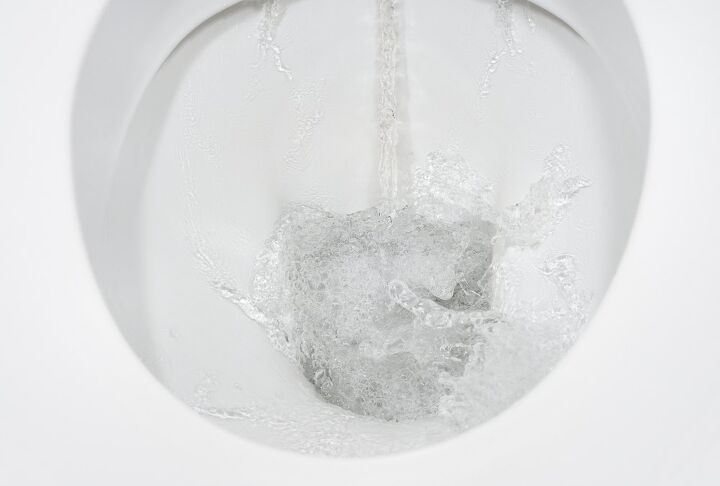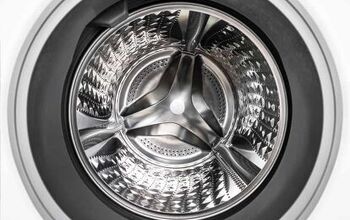Can A Running Toilet Cause A Flood? (Find Out Now!)

Running toilets are toilets that continuously cycle through water, and they’re a pest. A typical running toilet can waste as much as 200 gallons of water per day. When you hear that running noise echoing from your bathroom, you might be wondering if it can cause a flood. You might be surprised at the answer.
A running toilet can quickly turn into a flood risk, especially for homeowners who have a septic tank. When the excess water drains into the tank, there’s only so much space it can take up. When water runs out of a place to go, it will overflow into your home.
You might think that a running toilet is not a big deal, but it totally is. Here’s the scoop on what you need to know about this surprisingly rough problem.
Do You Need to Install or Repair a Toilet?
Get free, zero-commitment quotes from pro contractors near you.

Is A Running Toilet Always A Flood Risk?
Technically, having a toilet that keeps running isn’t always a flood risk in and of itself. Rather, it’s only a risk to people who have a septic tank system. If your sewage setup runs directly into the municipal sewer system (like the apartments in New York City), then you might not have as much of a flood risk.
However, all running toilets can cause a flood in the right circumstances. For example, if there is a clog in the toilet’s plumbing and it keeps running, the water will overflow into the area surrounding your toilet. It’s just the way physics works.
How Quickly Can A Running Toilet Flood?
If your toilet starts running, it can be hard to determine how much water it’s going to waste. Let’s say that you have a 500-gallon septic tank. A typical running toilet can waste a bare minimum of one to two gallons per hour. If nothing else is running water in your home, the toilet would flood in around 250 hours. That’s two weeks.
That doesn’t sound so bad, right? Well, most of us use the toilet. And we usually bathe at least once a day. Even running a couple of loads of laundry can strain a septic system. When you add 40 extra gallons on top of that, it could end up flooding your home.
How Can You Prevent Your Running Toilet From Flooding?
If you have a toilet that’s running, the best thing you can do is address the issue immediately. This is the only way you can prevent your toilet from causing a flood.
Important Things To Know About Floods From A Running Toilet
A running toilet is a “little” problem that can have pretty big consequences. It’s important to know who’s responsible and what can happen if your home floods as a result. Here’s the scoop:
- If you are a renter, then your landlord is responsible for fixing the running toilet. Give him a call. Landlords generally take this pretty seriously. They will fix it and make sure that the flood won’t happen. If they don’t, you have the right to withhold rent or break your contract.
- If you own the home, you can generally DIY a fix for this. This is assuming that it’s a flapper. If you have reason to believe it’s something else, you may need to hire a plumber.
- Flood insurance generally doesn’t cover floods caused by a running toilet. As a homeowner, it is your duty to make sure everything is well maintained. The upkeep (and repairs) you need for your toilet is going to be your burden to bear. If your toilet floods, the insurance company will see this as a result of your neglect. Therefore, they will deny your claim.
- You might not realize your flood has happened. Some septic tanks will start to leak out their contents into your yard rather than the inside of your home. If you notice tons of wet, foul-smelling puddles in your yard, you might have a hidden leak. It’s best to read up on signs of septic tank flooding to make sure you know what to look for.
How Much Does It Cost To Fix A Running Toilet?
It can get pretty costly. A running toilet can cost anywhere from $60 to $400 to fix, depending on where you live and the cause of the leak. $400 is a very extreme price tag that generally suggests that you have more than one problem with your toilet.
In this case, it’s often best to look at the lower end of the spectrum. Several sources cite that a simple flapper replacement will range between $60 to $120. On average, all toilet repairs will average around $250. So, either way, it can cost a pretty penny.
Is A Runny Toilet A Sign Of Other Plumbing Problems?
Though there is a lot of doom n’ gloom about runny toilets, there is some good news on the horizon. The good news is that a runny toilet is rarely ever a major sign of a series of problems. It’s more or less an isolated event that can be solved on its own.
When Should You Get Worried And Call A Plumber?
Honestly, this can often be a DIY fix. However, if you feel like there is something very wrong with your toilet or notice that there are more symptoms than just a running toilet, it may be time to call a pro. Things like having sudden backups in water, a toilet that won’t flush, or a strange musty smell near your walls could be a sign of something far worse.
A good rule of thumb is that you should call a plumber any time that you have a suspicion that your plumbing issues are beyond a simple fix. Of course, if you’re not the type of person to do your own plumbing, the answer is pretty obvious. Call a plumber when you notice something wrong!
Do You Need to Install or Repair a Toilet?
Get free, zero-commitment quotes from pro contractors near you.

Related Questions
Can your landlord evict you for failing to report a runny toilet?
Evictions don’t really work that way, at least not in most cases. In most rental agreements, there will be a clause that says renters have the duty to report damage done to the apartment. This includes things like toilets that are runny. If a landlord believes you didn’t report it and knew about the damage, it could be seen as a breach of contract.In most cases, landlords will give you a warning about the breach. If you don’t do it again, you’ll be alright. However, they do have the right to evict you if they want to.
How often do you need to replace a toilet?
Replacing a toilet is something that usually has to be done every 15 to 20 years. It is not a common issue to have, and in most cases, it’s just smarter to fix what’s wrong with your porcelain throne instead. Most people do not need to replace a toilet unless there is actual damage to the toilet’s exterior or interior porcelain.
What is a phantom flush?
A fantom flush happens when a toilet starts to run for two to three seconds at a time. This usually happens as a result of a slight leak that occurs in the plumbing mechanism. Phantom flushes are common when there is a problem with the flushing mechanism, or when there is a leak near the flapper. This needs to be addressed by a plumber.

Ossiana Tepfenhart is an expert writer, focusing on interior design and general home tips. Writing is her life, and it's what she does best. Her interests include art and real estate investments.
More by Ossiana Tepfenhart



























